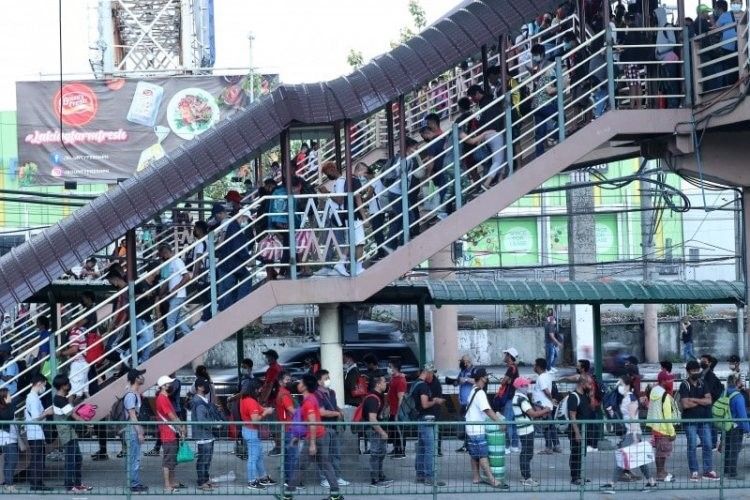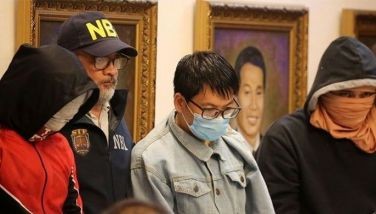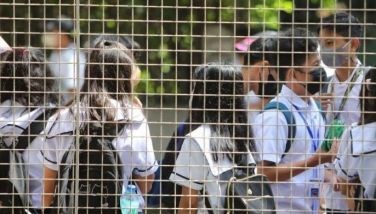Marcos mum on ‘short term’ plans for commuters, mobility groups say

MANILA, Philippines — As President Ferdinand Marcos Jr. gave tall orders to complete big-ticket railway projects in his first State of the Nation Address (SONA), mobility groups pointed out his lack of short-term and more urgent solutions to the transportation crisis.
AltMobility PH Director Ira Cruz said the president missed on commuters' basic needs such as providing sidewalks, bike lanes and overhauling the public transportation system.
“The focus on infrastructure over operations signals lack of grasp of issues facing the public transport sector: Commuters trapped in long lines, drivers buried in debit, and even motorists stuck in congested roads,” Cruz added.
Marcos said in his speech that he would continue and expand infrastructure programs, following suit of his predecessor Rodrigo Duterte. In talks on transportation, Marcos said the government has been missing a “great opportunity” to develop the country’s railways.
The chief executive vowed to pursue the shelved railway projects of the Duterte administration, such as the 33-kilometer Metro Manila subway project, the 27-kilometer Cebu Monorail transit and the 102-kilometer Mindanao railway project. Marcos also mentioned plans to revive the defunct Panay railway project.
Though railways are key investments, Move as One Coalition economist Robert Siy said other modes of transportation should also be prioritized “for earlier and broad-based results.”
The administration could begin by investing more in road-based public transportation and active mobility, Siy added.
“Metro Manila and many Philippine cities are in a transportation crisis,” he said. “While railways will produce results in the longer term, Filipino commuters need better mobility today.”
Siy suggested spending 1.5% of the gross domestic product (GDP) for public transport, pedestrians and cyclists out of the administration’s planned infrastructure spending of 5% to 6% of the GDP.
Meanwhile, Primo Morillo, convenor of transport advocacy network The Passenger Forum, said providing commuters with immediate relief should be a top priority in the middle of a transport crisis.
As the country reopened the economy, Filipino commuters have had to deal with longer waiting times and lines and the lack of public transport vehicles. Transport groups expect this to worsen once students return to face-to-face classes in November.
“We will continue to watch and engage the government, especially the [Department of Transportation], to ensure that the plight of commuters will not be set aside,” Morillo said.
While he said long-term mass transport solutions are “good,” Morillo raised that funding sources for big-ticket railway projects should also be scrutinized.
Marcos said there are a “dozen” railway projects at various stages of development with a combined cost of P1.9 trillion.
Fuel crisis
Both Piston group and Commuters of the Philippines said Marcos’ speech could have also elaborated on lowering fuel costs, which are overwhelmingly burdening drivers and commuters alike.
In a Facebook post, Piston expressed their dismay over the lack of concrete plans to bring down oil prices and to protect the livelihoods of 600,000 jeepney drivers and 150,000 operators in the country.
“Kung hindi ito agarang tutugunan ng national government, patuloy lamang na manganganib ang kabuhayan ng libo-libong tsuper at maliliit na operator sa bansa,” Piston said.
Julius Dalay, chairman of the Commuters of the Philippines, reiterated that pedestrian and active mobility fronts were “equally crucial” as the high-ticket infrastructure projects since they are also people’s “last mile options” in transportation.
“The urgent need during these times is to mitigate the impact of rising oil prices for [public utility vehicles] that, in turn, would reduce the burden [of fare increases] to commuters,” said Dalay.
The president said oil supply is expected to stabilize over the medium term as prices of crude oil barrels are expected to settle down by the end of the year.
While Marcos said he intends to provide farmers with fuel subsidies, he did not directly mention whether public utility drivers were included.
- Latest
- Trending






























